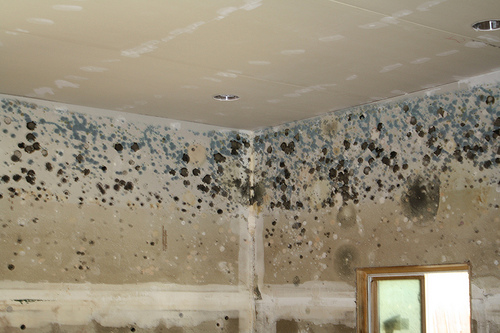Nearly everybody has his or her own idea with regards to How to Repair and Prevent Bathroom Water Damage?.

Water damage commonly happens in the bathroom because of the water used daily. Occasionally, the damage could be a little mold from the shower. Other times, it's large damages on your floor. Whatever it is, it is constantly good to know the cause as well as stop it before it happens.
This overview will undergo some of the usual reasons for water damage in the shower room. We will certainly additionally analyze what you can do to avoid these causes from harming your shower room. Let's dive in.
These are the usual reasons you would certainly have water damage in your shower rooms as well as how you can detect them:
Excess Wetness
It's great to have that long shower and also sprinkle water while you dance around and imitate you're doing, but occasionally these acts might cause water damage to your washroom.
Sprinkling water around can cause water to visit corners and create molds. Watch just how you spread excess wetness around, and also when you do it, clean it up to avoid damages.
Splits in your wall surface floor tiles
Restroom wall surface floor tiles have actually been specially made for that function. They shield the wall from dampness from people taking showers. Nonetheless, they are not unbreakable.
Occasionally, your restroom wall ceramic tiles crack as well as permit some moisture to permeate into the wall. This can potentially damage the wall if you don't take any kind of action. If you observe a crack on your wall floor tiles, repair it right away. Do not wait up until it damages your wall.
Overflowing bathrooms and also sinks
As humans, often we make blunders that could trigger some water damage in the bathroom. For instance, leaving your sink faucet on can cause overflowing as well as damages to various other parts of the bathroom with wetness.
Additionally, a defective bathroom can create overruning. For example, a damaged bathroom take care of or various other parts of the tank. When this occurs, it might harm the flooring.
As quickly as you see an overflowing sink or toilet, call a plumbing technician to aid deal with it instantly.
Ruptured or Dripping Pipelines
There are several pipelines lugging water to various parts of your bathroom. Some pipes take water to the toilet, the sink, the taps, the shower, as well as numerous other locations. They crisscross the tiny location of the washroom.
Every so often, these pipes can get rusty and ruptured. Other times, human action could cause them to leak. When this occurs, you'll discover water in the corners of your shower room or on the wall surface.
To detect this, keep an eye out for gurgling wall surfaces, molds, or mildew. Call a professional emergency plumbing to repair this when it occurs.
Roofing system Leaks
Sometimes, the problem of water damage to the bathroom could not originate from the shower room. For instance, a roofing leak could create damages to the restroom ceiling. You can find the damage done by considering the water discolorations on the ceiling.
If you discover water stains on your ceiling, inspect the roof to see if it's harmed. After that, call a professional to aid fix the problem.
Conclusion
Water damage to your washroom can be aggravating. Nevertheless, you can handle it if you prevent several of the reasons mentioned in this overview. Call an expert emergency plumbing professional if you observe any severe damages.
How to Prevent Water Damage in Your Bathroom?
Water damage repair is an expensive, meticulous, and lengthy process. Unfortunately, bathrooms are the most susceptible rooms to water damage due to toilets, showers, and sinks. Pipes and fixtures wear out over time and are not immune to damage. But all is not lost, as there are ways to prevent water damage from occurring in your bathroom.
Check Your Plumbing
Nothing lasts forever, especially pipes, which can rust and begin leaking over time. You should periodically conduct pipe inspections and pay attention for any musty smells or water stains that may indicate you need water damage repair. Here are some things to check:
- Frequently test valves for your toilet, shower, and sink to ensure they are properly working.
- Check faucet supply lines hidden under vanities and replace when needed.
- Replace cracked or deteriorating caulking along sinks, tubs, and showers.
- If you notice a clog in your sink, call in a professional.
- Since you can’t check the pipes in the wall, keep an eye out for stains, drywall bubbling, musty smells, and excess moisture; if the bathroom is on a second level, check the ceiling of the room directly below for these signs.
Don’t Overwork Your Toilet
One of the most common reasons bathrooms need water damage repair is due to overflowing toilets. Save yourself the hassle of cleanup by being mindful and not pushing your toilet to extreme limits. If you have young children, it is especially important to keep an eye on them when they are in the bathroom and to teach them how to avoid clogging the toilet. Here are some more tips to help prevent your toilet from overflowing:
- If you have a septic tank, only use septic-safe toilet paper
- Do not flush anything down the toilet besides toilet paper; items like diapers and sanitary napkins will clog the piping
- Pay attention to your toilet’s water level: If it’s low, it could mean it is partially clogged or that there is a crack in the toilet bowl
https://www.alure.com/home-improvements-blog/resources/how-to-prevent-water-damage-in-your-bathroom

We had been shown that article on How to Repair and Prevent Bathroom Water Damage? from an associate on another web page. Those who liked our blog posting if you please do not forget to pass it around. Thank you for your time spent reading it.
Expert attention offered.
Comments on “The Causes of Moisture Harm in the Bathroom”